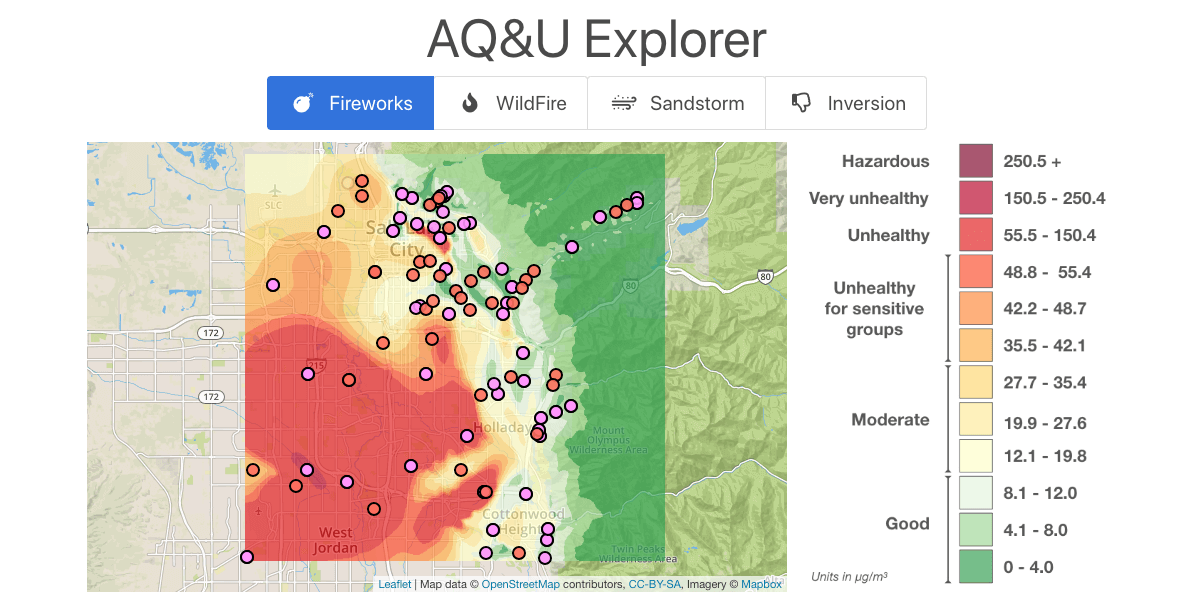
Abstract
Communities of citizen scientists have proven themselves to be capable of contributing to research endeavors in meaningful ways, and on a scale that would be impractical for any traditional research group. High-quality data collection by P12 citizen scientists presents one set of hurdles, which have been the subject of significant citizen scientist research. However, important questions remain on how to best engage the same students within more complex cognitive domains, such as hypothesis generation and validation. We have recruited P12 classrooms to becomes hosts in a network of distributed air quality sensors, across a community which experience some of the worst air quality in the United States. These classroom-hosted sensors are integrated into an infrastructure called AQ&U that includes, in addition to the networked sensors, statistical models and visualizations for identifying and communicating pollution events at a community scale. In this work we report on methods used to help students move from comprehension of their one sensor in one location, to analysis and evaluation of a vast network of data to which their one sensor contributes. Curated sets from impactful air quality events, including fireworks, wildfires, and inversions, are used in combination with visualization tools to advance students’ ability to generate and evaluate hypotheses about the air quality in their valley, and connect their conclusions to community governance. Survey and other observational data from classroom visits are used to assess the effectiveness of the developed teaching module and larger pre-college citizen scientist effort.
Citation
Jimmy Moore,
Matthew Dailey,
Zachary Wilhelm,
Kerry Kelly,
Pascal Goffin,
Anthony Butterfield,
Jason Wiese,
Wei Xing,
Katrina Myquyen,
Thomas Becnel,
Pierre-Emmanuel Gaillardon
Engaging Middle and High School Students in Hypothesis Generation Using a Citizen-Scientist Network of Air Quality Sensors
American Insitute of Chemical Engineers, 14, doi:10.18260/1-2--35538, 2019.
BibTeX
@article{2019_asee_air_quality,
title = {Engaging Middle and High School Students in Hypothesis Generation Using a Citizen-Scientist Network of Air Quality Sensors},
author = {Jimmy Moore and Matthew Dailey and Zachary Wilhelm and Kerry Kelly and Pascal Goffin and Anthony Butterfield and Jason Wiese and Wei Xing and Katrina Myquyen and Thomas Becnel and Pierre-Emmanuel Gaillardon},
journal = {American Insitute of Chemical Engineers},
publisher = {American Institute for Chemical Engineers Annual Meeting},
doi = {10.18260/1-2--35538},
pages = {14},
month = {nov},
year = {2019}
}
Acknowledgements
This material is based in part upon work supported by the National Science Foundation under Grant Numbers 1646408 and 1642513. Any opinions, findings, and conclusions or recommendations expressed in this material are those of the author(s) and do not necessarily reflect the views of the National Science Foundation.
Dr. Gaillardon and Kelly have financial interest in the company Tetrad: Sensor Network Solutions, LLC, which commercializes air quality sensing solutions and provided engineering service